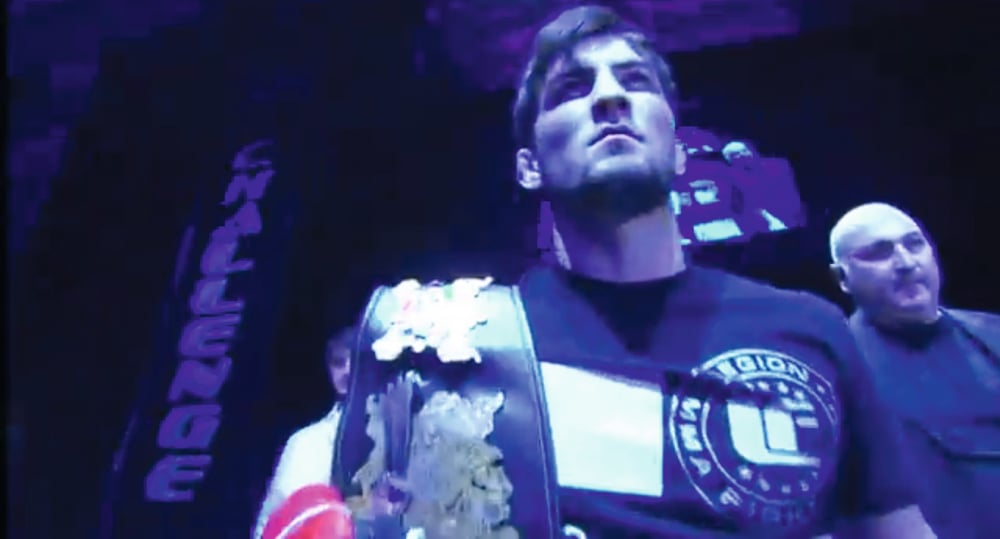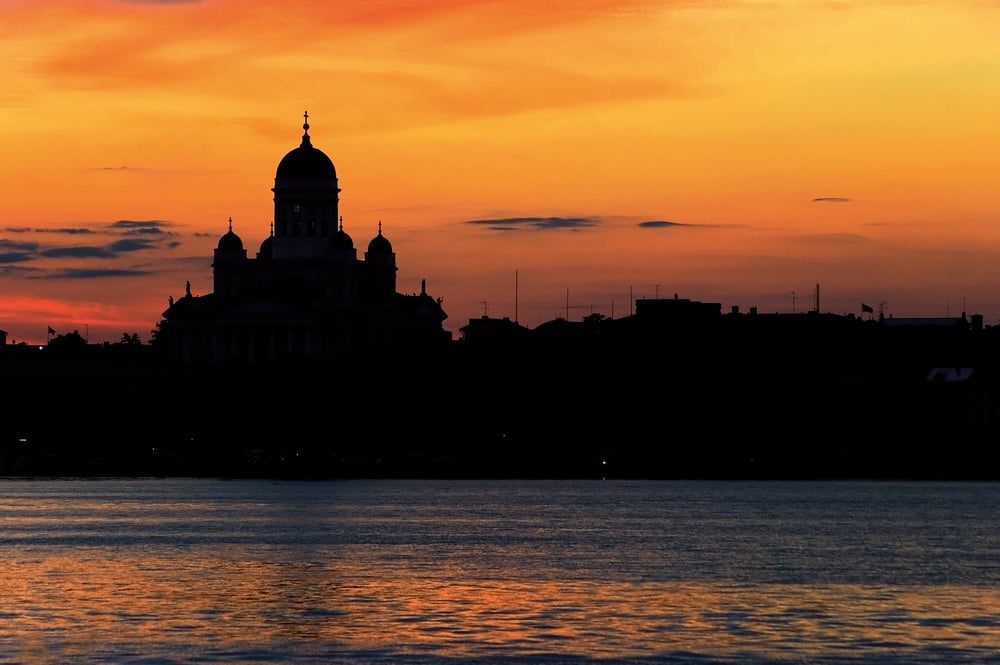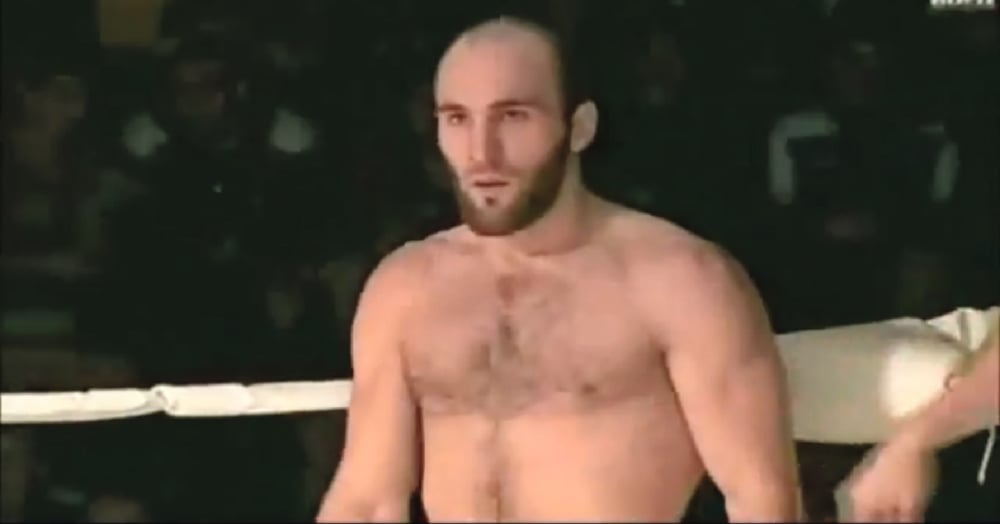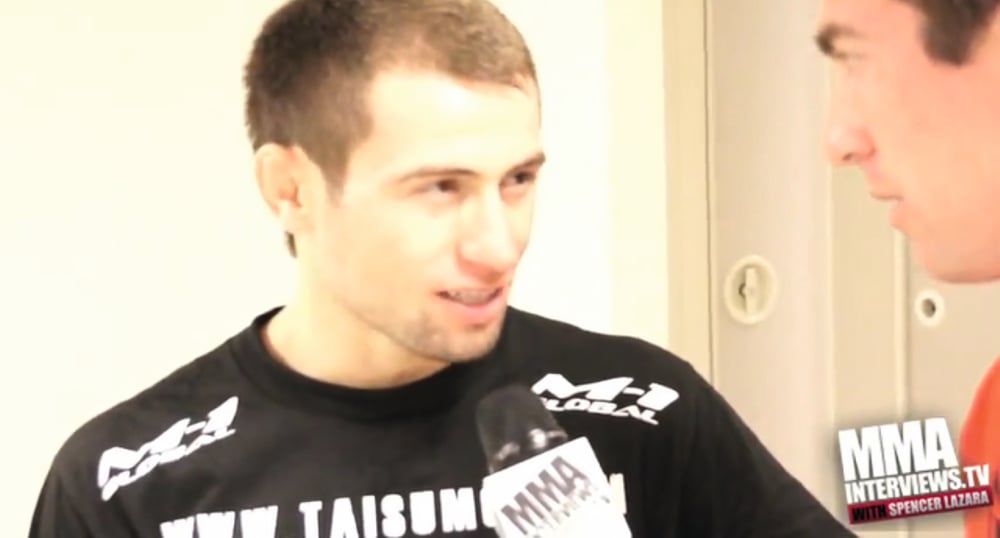
Issue 106
October 2013
Fedor Emelianenko wasn’t ‘The Last Emperor’ after all, he was simply first and has inspired a whole new generation of Russian fighters to invade and conquer the world of mixed martial arts… America and Brazil, you have been warned!
I know it was you Fedor, you broke my heart. Those were the thoughts of millions of fight fans the night Fedor Emelianenko scuppered a potential move to the UFC by falling into a Fabricio Werdum triangle-armbar and tapping out. The tap represented so much more than just the end of the fight. It signaled the end of a dream – that of seeing Fedor take on the world’s best heavyweights in the UFC – and, in the eyes of some, the end of a myth, too. Fedor, the invincible destroyer with doe-eyes and a doughy torso, had succumbed to a UFC reject, in a loss that triggered a run of three defeats for the ruined Russian.
No longer invincible, no longer even able to win, the clamor to see Fedor in the Octagon soon withered and died. Whether supporter or cynic, the sight of the world’s most iconic heavyweight slipping from feared to forlorn was a sad sight to behold. His reign had, after all, promised and delivered so much.

He carried mother Russia on his broad shoulders and single-handedly put the nation on the mixed martial arts map. Whilst most of his countrymen struggled to make the grade, or appeared happy to fulfill journeymen roles within the sport, Fedor used sambo – a martial art his ancestors invented – to kickstart what ended up being a legendary fighting career. He was MMA’s original ‘greatest of all time’ – and Russia rejoiced.
Then, just like that, it was all over. Fedor never did fight in the UFC Octagon, and the world never got the chance to see him perform on the biggest stage in the sport. What’s worse, his rapid demise also saw his legacy called into question.
His nickname, ‘The Last Emperor,’ brought to mind a one-man army, a final stand. And, for a long time, he was certainly all out on his own as far as Russian interest in mixed martial arts goes. Sure, there were others – the likes of Sergei Kharitonov and Fedor’s brother, Alexander, spring to mind – but nobody was disrupting the pound-for-pound list and dividing opinion quite like the big man himself.
Yet, because of this sense of responsibility, Fedor was also very much a cherished product of his homeland; one the powers that be tried desperately to keep buried in their pocket for as long as possible. In the end, nobody fully capitalized on his mystique the way they all perhaps should have done.
What did emerge from Fedor’s legacy, however, was something far greater than any pound-for-pound ranking or Octagon victory. What emerged from the debris were scores of young Russian mixed martial artists keen to not only follow in his sizeable footsteps, but potentially go one step further and make that final leap into
the UFC.
He likely didn’t know it at the time, but Fedor’s long-running status as the ‘baddest man on the planet,’ whether warranted or not, whether based in reality or romance, had drawn youngsters to the sport in his home country and helped mold the minds of aspiring high-caliber wrestlers, the kind Russia traditionally produces at a frightening rate.
The MMA world is now starting to realize Fedor was anything but ‘The Last Emperor.’ Instead, he was effectively the first. And his impact, loud and far-reaching, has helped connect the pieces of what appeared to be a straightforward puzzle. Because, let’s face it, if anybody was seemingly destined to one day find glory in combat sports, it’s those of Russian descent.
Why? Well, for starters, consider this: the Russians can rightly call combat sambo their own creation, and they also frequently top the medal boards in wrestling at the Olympic Games.
In fact, Russia, the Soviet Union and the Unified Team – which represented 12 of the 15 Soviet republics at the ‘92 Games – haven’t been budged from the number one slot on the grappling art’s medal table since 1984. They sweep shiny discs like Fedor used to secure armbars: with consummate ease.
And though not quite as emphatic, they share similar success in judo and boxing, too. Meaning, as far as building blocks for mixed martial arts, you couldn’t hope for better. The pieces were always there. All it took was a little time and inspiration.
Last year the Ministry of Sport recognized MMA as an official sport in Russia, and none other than Fedor Emelianenko was asked to run it. There is now government support for amateur development, and rumors of an entire grading system for creating top international fighters. And if this new system in any way resembles those used to create Russian talent in judo and wrestling, it’s fair to say mixed martial arts is in capable hands in Eastern Europe.
It’s worth considering that, in terms of being well-equipped and well-versed in multiple disciplines, young amateur fighters from Russia may even be ahead of their peers from America and Brazil. Now that’s potentially a sport-changing thought for the rest of Planet MMA, no question.
This is no great secret, either. A slow-burning Russian dominance has been on the cards ever since Fedor made Japan his second home in the early noughties. The rest have finally caught up and premier MMA organizations are now snapping up this fledgling Russian talent like they’re long-lost descendants of the Gracies.

RUSSIAN BREAKTHROUGH
Even the UFC, the organization for so long inextricably linked with Fedor, currently boasts four highly promising Russians on its packed roster. Lightweights Khabib Nurmagomedov (20-0) and Rustam Khabilov (16-1) are 24 and 26 years of age respectively, and have yet to lose in the Octagon. Nurmagomedov has won four on the spin since signing at the start of 2012, while Khabilov has tasted victory twice.
And then there’s Adlan Amagov, also 26, who moved his MMA record to 12-2 with a UFC debut win over Chris Spang in April, and flyweight Azamat Gashimov, albeit less successful in his Octagon journey so far.
To further aid their development, the four of them now train in America: Nurmagomedov at San Jose’s AKA and Khabilov, Amagov and Gashimov at Jackson’s Gym in Albuquerque. After Khabilov’s recent win over Yancy Medeiros, trainer Greg Jackson called the Russian “the happiest fighter I’ve ever had,” revealing he has no worries getting into an enclosed space and scrapping it out for 15 minutes. Rather, the very thought of this makes Khabilov happy. Coach Jackson, a man who has worked with the best this sport can offer, has never seen a fighter react this way to the stench of combat. Naturally, he tips Khablilov to one day win a world championship.
But this Russian breakthrough isn’t something exclusive to just Greg Jackson or, indeed, the UFC. In fact, one could argue it’s Spike TV promotion Bellator that has so far grabbed the largest stake of the Russian action, plucking a number of fighters from the thriving RusFighters gym in St Petersburg and then handing them a platform on which to showcase their talents.

And that platform isn’t limited to the US, either. Russian broadcasting giant Russia 2, with whom Bellator signed an agreement last summer, screen all Bellator’s events. The network has a reach of 83 million Russians and the deal offers the kind of exposure the UFC has yet to secure for its own pack of fighters from that corner of the world.
Benefiting from the R2 deal are Russian warriors like Alexander ‘Storm’ Shlemenko, a 29-year-old Bellator middleweight champion with over 50 bouts to his name; heavyweight prospects Vitaly Minakov; Ruslan Magomedov and Alexander Volkov; welterweight tournament winner Andrey Koreshkov; and featherweight tournament winners Shahbulat Shamhalaev and Magomedrasul Khasbulaev.
When announcing the Bellator and R2 link-up, Grigory Kovbasyuk, executive producer of R2, said: “Bellator is the world’s leading tournament-based MMA organization, featuring the greatest Russian MMA fighters.” More than just PR bluster, the comment resonated and was in line with what many mixed martial arts experts tend to believe; that Bellator has beaten rival organizations to the punch in spotting and then showcasing the very best talent Europe has to offer.
By aligning themselves with the top gyms in Russia, specifically RusFighters, the chief talent-spotters at Bellator have built bridges and gained trust with those fighters looking to make a name for themselves overseas. Many of the fighters listed either train or have trained at RusFighters, and while America boasts quality fight camps in just about every metropolitan area, Russia remains very much steeped in a ‘club’ mentality. If a youngster wants to fight, they make their way either to RusFighters, Red Devil Sport Club (famous for the Emelianenko brothers), or Academy MMA. Consequently, these clubs tend to be rich in talent.
In the Russian MMA business, the tendency, therefore, is to not sign just one fighter, but instead a gym, an entire group of fighters. And because the standard is typically so high, the likes of Bellator can’t really go wrong. While checking in at RusFighters, they get a Shlemenko, then also a Koreshkov and a Volkov. Russian fighters take the shape of trading cards: you don’t buy individuals, you buy them in packs.
Furthermore, it now seems Bellator receives a kind of first-refusal option on any promising talent that happens to walk through the doors of RusFighters and displays a desire to visit America. Good work if you can get it.

SOMETHING IN THE WATER
Interestingly, Dagestan, the southern-most region of Russia, and home to fewer than three million people, acted as the starting point for many of the aforementioned Russians currently challenging the pronunciation skills of MMA commentators. UFC stars Nurmagomedov, Khabilov and Gashimov were all raised in Dagestan, and so too were Bellator’s Shamhalaev, Magomedov and Khasbulaev. There are many others as well, competing either in M-1 Global, the organization part-owned by Fedor, or on smaller promotions. Something in the water, perhaps? If only Xyience could bottle that supply!
Dagestan residents are certainly people accustomed to conflict and survival. Since 2000, Dagestan has been a hub of a low-level guerrilla war, spilling over from Chechnya, fighting that has claimed the lives of hundreds of federal servicemen and officials, as well as plenty of Dagestani national rebels and civilians.
The country is war-torn and, in order to survive, its residents are taught to be tough and competitive from an early age. They also tend to gravitate towards sport to escape their troubles – particularly given the surroundings, combat sports. Zainalbek Zainalbekov, instructor at the Russian National Center of Martial Arts, says: “I believe I actually saw a program which suggested that northern regions of Russia should focus on skiing, biathlon and winter sports in general; and southern republics like Dagestan on combat sports.”
This would go some way to explaining the virus that has spread throughout the region and helped create the kind of skill-set and mind-set required to flourish in the competitive field of mixed martial arts. It would also offer a reason why many of MMA’s leading promotional organizations are targeting Russia and its neighbors as breeding grounds for the future of sport.
Working from a template provided by arguably one of the greatest ever to compete, the Russian labs – see war-torn areas and sweat-filled gyms – are producing dynamic mixed martial artists consisting of both something old and something new.
You see, while Fedor may never have looked like the archetypal fighter – all soft edges, dozy grin and lazy eyes – his mentality and hunger, as well as his ability to inspire, helped unlock for others the same doors he was unable to open towards the end of his own career. When all is said and done, then, maybe he had the last laugh. He may have created an empire that’s destined for world domination after all.
ON THE RADAR SPECIAL
Coming soon to an MMA promotion near you…

Chechen Adam Khaliev is known to few as a middleweight unbeaten in six MMA bouts, a master of judo and karate, and one of the best young strikers in the game. To others, those primarily lurking on YouTube, he’s known as the balding fellow who performed a tornado kick on the unsuspecting Alexei Belyaev, leaving him confused and out cold for a matter of minutes. It was perhaps the showiest knockout in MMA history, and instantly earmarked Khaliev as one to watch.

Meanwhile, following the path set by Fedor at Red Devil Sport Club is light heavyweight Viktor Nemkov, a 26-year-old sambo expert who won gold at the 2011 World Championships in Lithuania. Since being submitted by Vinny Magalhaes, Nemkov has strung together a four-fight winning streak. All but three of his 19 bouts to date have taken place in Russia.

And here are a couple of M-1 Global champions for you. Rashid Magomedov and Musa Khamanaev. The former is a 29-year-old welterweight champion, while the latter is 25 and a lightweight titleholder. Neither have performed in the major leagues yet, but both possess an abundance of talent.

Finally, Mairbek Taisumov is a 24-year-old lightweight who has won 19 of 23 bouts and has ended all of his wins inside the distance. Combining knockouts with submissions, Taisumov is well rounded enough to pick and choose and, clearly, he hates leaving it in the hands of the judges. Dana White would love him.
...









